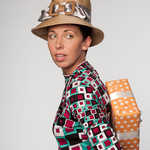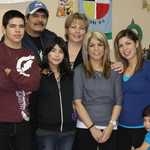

Indigenous Traditions and Narrative Significance
November 9th, 2013, 7pm
It was -5°C with overcast. The breeze was light.
In studying indigenous cultures we learn how everything in our world is tied together in one way or another. It only makes sense then that the artistic creations made by indigenous tribes have more meaning than what meets the eye. They usually hold special meaning and tell a visual story about their culture and history.
The Asante people of West Africa decorate fabric with Adinkra stamping. Pattern blocks are made from calabashes and the dye is made from boiled tree bark. They make their creations with items found in nature and the wearer of the items is connected back to the land. The special designs are stamped into clothing and hold special meaning. They also tell a story about the individual who is wearing the clothes (Kubesh, 2007).
The Fon people of Benin, Africa use story cloths to tell their history. Figures and objects are cut out of bright colours and then appliqued onto cotton cloth. Banners were used in the past for Kings to decorate with as they told a picture story of the tribe’s history. A common object to use was the pineapple as their belief was that lightening would never strike a pineapple (Kubesh, 2007).
The Hibla are a Filipino tribe. They have several traditions of textile-weaving, beadwork, basket-making, and embroidery. Weaving takes many forms, but has always been considered to be a ceremony in cultural expression. We can see the importance placed on the connection with nature in the collection and preparation of materials, and in how natural motifs are tied into the designs. Their designs share the visual language of their tribe and culture. Beadwork designs also tell the story of their community, identity, customs, and traditions. Their website is named “The Thread of Life” and they refer to “a sinew that strengthens and binds”. Their work is a story that tells how our history, our future, our cultures, nature, and we as individuals are all connected (About Hibla, 2013).
We can see from just these few short examples that everyone has their own identity and way of creating visual stories to pass on knowledge.
Other moments in The Pas
-
prairie first nations, indigenous, Brandon Story Class
The Seven Teachings are part of the First Nations Peoples lives, living on the Prairies here in Canada
in The Pas, Canada -
prairie first nations, indigenous, Brandon Story Class
Suicide on reserves
in The Pas, Canada -
Brandon Story Class, indigenous, prairie first nations
Alcoholism on reserves
in The Pas, Canada -
prairie first nations, Brandon Story Class
Pike Lake Culture Daylocal artist: Solomon Colomb 2002
in The Pas, Canada -
prairie first nations, Brandon Story Class
A look back to The Oka Crisis, 13 years ago.Part of my Winter Count
in The Pas, Canada -
Brandon Story Class
Pearl exclaims;"Can I help you with your homework"
in The Pas, Canada -
prairie first nations, Brandon Story Class
The ulu knife, traditionally the handle is made from caribou antler or walrus ivory. The blade was made of slate, until metal was introduced during the Fur Trade.
in The Pas, Canada -
prairie first nations, Brandon Story Class
Art from Baffin Island.
in The Pas, Canada -
prairie first nations, indigenous, Brandon Story Class
White Feather
in The Pas, Canada


